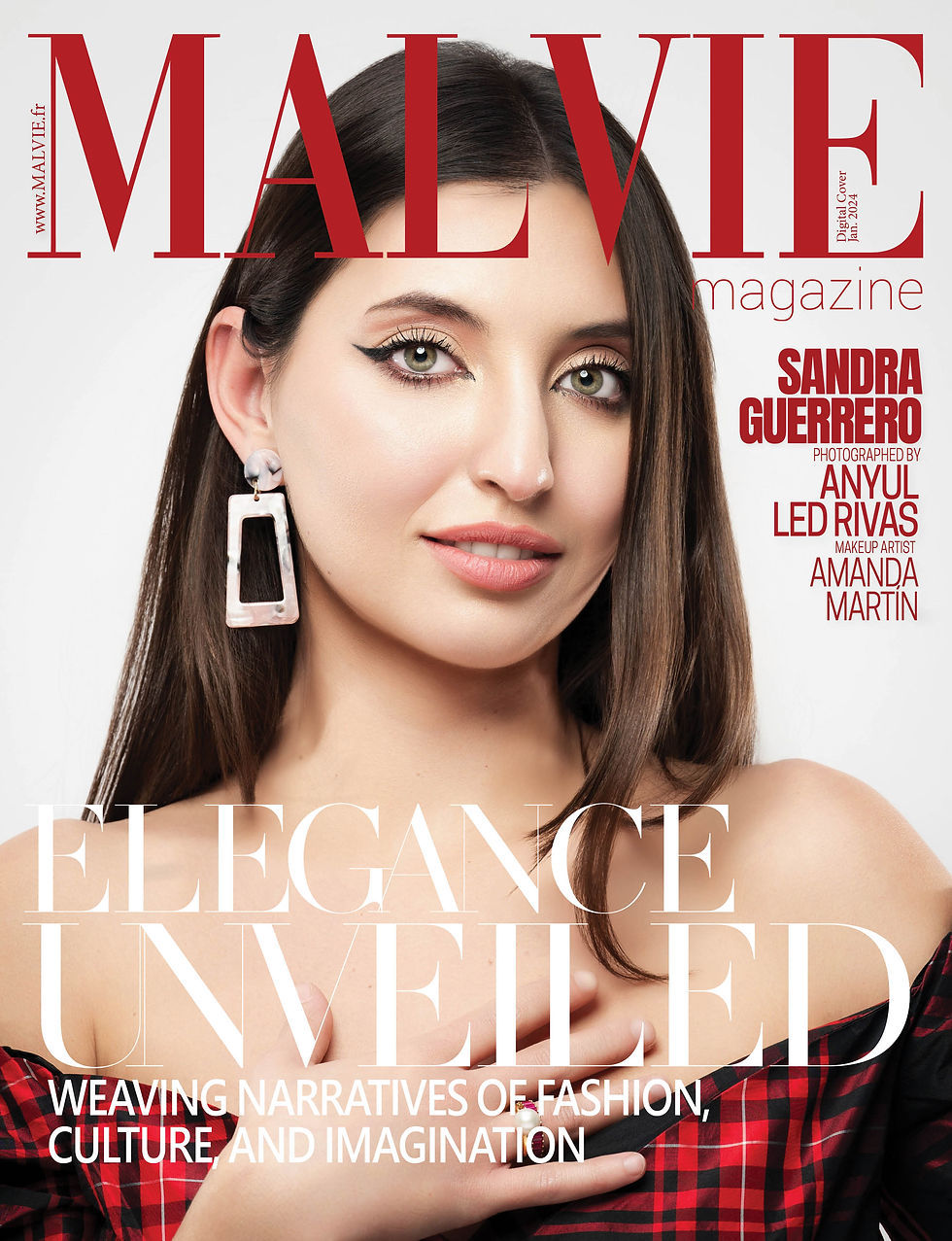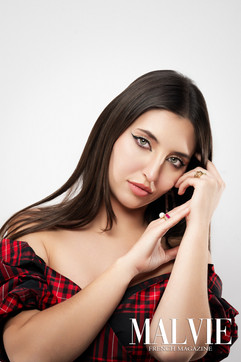Sandra Guerrero
- MALVIE Magazine
- Jan 18, 2024
- 6 min read

Can you share a bit more about the experience of receiving your first camera from your mom on your 8th birthday and how it sparked your interest in photography?
It was a point-and-shoot camera which used camera rolls, so you had to really think about the thing you wanted to portray because rolls and its revelation weren’t something affordable for me. I loved the idea of capturing a moment and making it long-lasting.
What motivated you to pursue photography more seriously, leading to the purchase of your first DSLR in 2011?
Ever since I started travelling I wanted to capture the most significant things and the beautiful landscapes I saw, the people I met, so I can show them to the rest when I came back from them. Then I started to pursue new perspectives, new composition, to differentiate myself from the vast number of photos from tourist places. I also started photographing people, but was too shy to ask them to pose or give them instructions on how to pose. It was a Nikon D700 with an 18-200 mm lens, which allowed me to perform landscape and portrait shoots.
Could you elaborate on your experience attending photography schools and workshops during 2013–2015? How did these experiences shape your skills?
There’s a common saying about photography, “it's the Indian, not the arrow” that showed me that I needed to strengthen my skills and educate my view if I wanted to create more beautiful pictures. Instead of investing in better equipment, I decided to Attend to Escuela Foto Arte and complete all the 3 photography levels and then attend to different specializations: portrait and fashion photography.
Later on, I discovered other photographers who held workshops in town, and I became interested in the ones with Roberto Mata and Eduardo Alvarez, because of the quality of their work, and this former one published a book about artistic nude called “desnudarte”, it’s a play on words between “desnudo” (nude) and “art” (arte) conveying the idea that nude photography could also be stylized and artistic.
With them, I learned how to develop photography series with a common speech, interact with other models and develop in the world of photography. I learned how to go beyond a beautiful picture to something that has its language and meaning.

What prompted you to sell all your photography equipment in 2016 and migrate to Barcelona, Spain?
My country went through a political and economic crisis during the 10s, and well over 5 million people had to leave their country, their families, and the status they had all their lifetime building to pursue better life quality. I was taking pictures of events and people when I realized that having two jobs (mainly as a software engineer) wasn't enough to live my life, pursue my dreams, and make plans for the future.
I got a job as a software developer at a company in Barcelona. They paid for my travel and accommodation, as well as my Visa and work permit. This was a unique opportunity to reinvent myself and continue developing my professional career. I sold all my equipment and came to Barcelona in 3 months of being informed I was accepted.
How did the transition from pursuing photography to becoming a software developer impact your creative pursuits?
I do both things in parallel, They’re both my passions and I enjoy dedicating my time to both of them. During my weekdays I delve into technical problems and solve them using my programming skills, and during the weekends and holidays I attend to workshops, photography school, and do photography sessions.
How did the pandemic influence your decision to rekindle your interest in photography after six years of focusing on your software development career?
Coming to Barcelona gave me the opportunity to skyrocket my career, I grew up professionally from a junior position to the Principal software engineer, but all that focusing on my career left me with a sense of lacking. During the pandemic, being in isolation allowed me to think about what makes you happy. When they relaxed the rules, I bought a new camera called Nikon Z6 ii and started taking pictures again.
What led you to choose a mirrorless camera upon your return to photography?
I have always been a Nikon user, so I’m habituated to the camera structure and the results I can get from them. I have never felt comfortable using other brands, some controls feel counterintuitive. Likewise, I saw in the news that Nikon was getting up to speed in the mirrorless market, and I considered this to be the perfect time to buy one.
Could you share the reasons behind shifting your focus from landscape photography to portraits, artistic nude, and boudoir?
It’s part of how I have developed my personality over the years. I grew up being introvert and analytical, and growing up professionally into senior position and organizing public events made me develop a more extrovert and confident aspect of myself. I could have never imagined me as a photographer giving directions to models and working collaboratively to produce a joint artistic vision.
The boudoir style has this appealing look, a “je ne sais quois” that makes it look very soft, classy, and elegant. I completely fell in love with this style that also empowers women.

What inspired the decision to dedicate more resources to photography last year, especially focusing on boudoir photography?
Having a consolidated software development career gave me rooms to dedicate more time to the things I love. Learning new things at photography schools and applying them in the workshops have been very rewarding for me. Then I started to do private sessions and also enjoyed them. I have tried many photography styles this last two years and boudoir has been the one where I feel more comfortable and enjoy the results at the fullest.
What are your goals and aspirations for starting a small boudoir photography business in Barcelona this year?
Boudoir photography is far more than just a photo session; it is a deeply personal experience, It's about creating an atmosphere, a vibe, that allows the subject to connect with their inner self in a way that's both empowering and transformative. I want to make available this empowering experience available for any women in Barcelona. In my approach to boudoir photography, I focus on crafting an environment that is not just comfortable and safe, but one that also resonates with the mood and personality of each individual. This is about capturing the essence of their being, their unique beauty and strength, in a setting that is as much about the journey of self-discovery and confidence-building as it is about the final photographs.
I am passionate about making this empowering experience accessible to all women in Barcelona, regardless of their background or body type. I believe every woman deserves the opportunity to see herself in a new light, to celebrate her individuality, and to embrace her femininity with pride and confidence. This experience is designed to be liberating and affirming, providing not just a series of beautiful images, but a memorable experience that can have a lasting positive impact on self-perception and confidence. My goal is to create a space where every woman can feel valued, beautiful, and strong, capturing their true essence in a way that transcends traditional photography.
How do you approach the creative process when working on portraits, artistic nude, and boudoir photography?
I do it with a blend of technical expertise, artistic sensibility, and emotional intelligence. I read and analyze the work of some of my referents in photography and other media looking for inspiration, but also remain open to spontaneous moments of that can bring unique depth to my work. Then I focus on creating a comfortable and trusting environment for my subjects, which is particularly crucial in more intimate forms of photography. Finally, I combine with my knowledge of lighting, composition and camera technology to capture the images that are not only visually striking but also emotionally resonant. I’m constantly developing and evolving my style and artistic vision, and trying to keep consistent in the process.
Can you share any significant challenges you've faced during your photography journey and how you've overcome them?
One of the most difficult challenges in my photography career was transitioning from landscape to portrait photography. This change highlighted my need for improvement in directing models and engaging with people, a daunting task for my introverted nature. I was more accustomed to the solitary environment of landscapes, so adapting to the interactive nature of portrait photography was initially a struggle.
Photography has been a transformative tool for me. It pushed me out of my comfort zone, helping me to grow not just as a photographer, but also as a communicator and listener. This journey not only improved my ability to capture more authentic portraits, but also significantly boosted my personal confidence and growth in social interactions. This experience has been both challenging and immensely rewarding, marking a significant development in my professional and personal life.
Model: Sandra Guerrero @ssandraguerreroo
Makeup Artist: Amanda Martín @amandamb2004
Photographer: Anyul Led Rivas @anyulled




















Comments